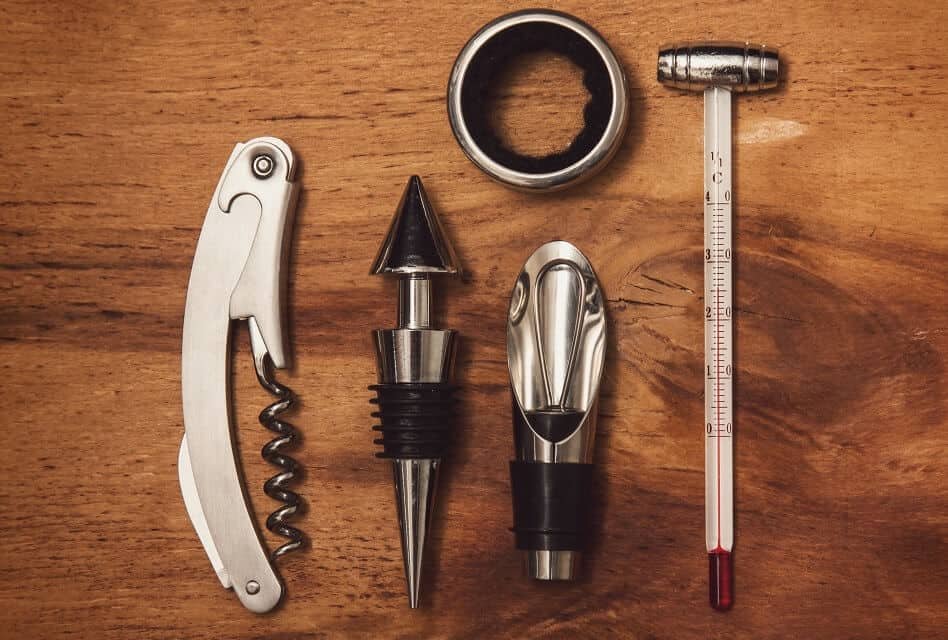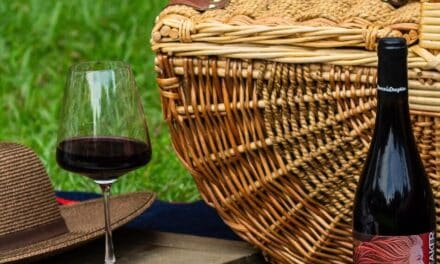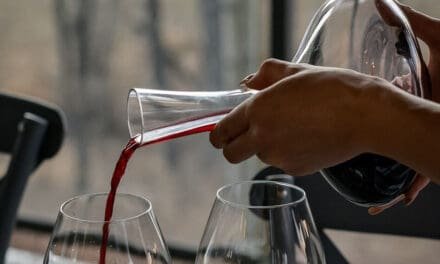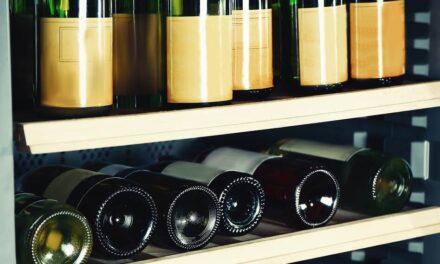In this article, we will discuss the most helpful wine tools that every wine lover should own, including:
CORKSCREWS
Obviously, you need to open the bottle before enjoying a delicious sip of wine. And as wine bottles have special closures, you need a special tool to open them: a corkscrew.
These essential wine tools come in many different shapes and with different mechanics. The most basic corkscrew is a twisted piece of metal with a sharp head on one end and a wooden handle on the other end.
There are many variations, though. Most of them are manual bottle openers, such as the two-prong puller or the rabbit opener. That means you have to invest a bit of muscle strength when using them.
But you can also find electric corkscrews that do not require any physical effort to open a bottle. You just put them on top of the bottle, press a button, and the device does the job.
No matter which type you prefer, it makes sense to have at least two corkscrews in the house. In case you break one, you always have a backup.
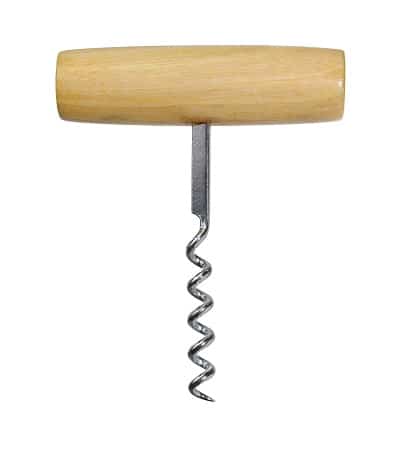
Simple Manual Bottle Opener
GLASSWARE
You may have seen different shapes and styles of wine stemware and wondered about their point. The different styles of wine glasses have evolved over hundreds of years. Their designs aim to showcase the characteristics of specific types of wine. For this purpose, glass blowers carefully determine the bowl size, the mouth shape, and the stem length of their glasses.
The right glass allows the wine to release its most delicate flavors. It also positively affects the evaporation of unpleasant odors, such as strong alcoholic smells. And it will guide the wine to the right place in your mouth where you can sense its aromas best. Besides, it just looks fantastic if you have different wine glasses in your home bar.
If you are new to the world of wine, it is best to start with the standard glassware: a set of red wine glasses and a set of white wine glasses. From here, you can branch out into more specialized types. If you already know your favorite wine, you can go for the right glasses right away. Nevertheless, you should prepare for guests who prefer other styles.
In any case, a set of champagne flutes is a must-have, so you are ready to toast a birthday, an anniversary, or another festive occasion.
WINE FRIDGES
Temperature is a crucial factor when storing wine. If you keep your wine in a place that is too warm, you might speed up its aging process and cause it to go off. And if the storing temperature is too low, it can cause the wine’s acidity to crystallize and form sediments.
While a regular fridge is acceptable to keep an open bottle for a couple of days, it is not suitable for long-term storage. With temperatures between 41 and 45°F (5-7°C), it is simply too cold.
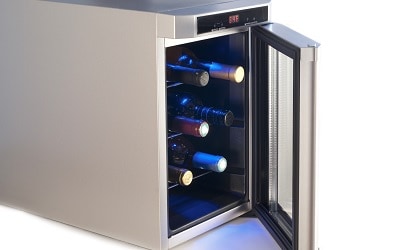
Small Wine Fridge
To provide optimal conditions for your wines, you need a wine cooler. These special refrigerations provide the perfect temperatures for wine.
Some models go one step further: They allow you to set up two or more temperature zones to store different types of wine. In contrast to regular fridges, they are also free of harmful vibrations.
If you plan to build a collection of fine bottles, a wine cooler is crucial. Entry-level wine coolers are available as standalone or built-in/under-counter models from 300 USD. High-end devices for 100 to 200 bottles cost several thousands of dollars.
WINE RACKS
In case, you already have a cool cellar room, a wine fridge might not be necessary. Nevertheless, you must make sure to store your precious bottles in the right position. For most wines, that means they should lay on their sides. A wine rack is what you need for that. With their unique shapes, they provide safe storage and prevent your bottles from rolling around.
Wine racks come in a wide variety of different designs, materials, and sizes. Typically they are made from either wood or metal. In terms of function, there is no difference between these two options. So feel free to choose what matches your preference in terms of aesthetics. If you’re new to the world of wine, a small rack with a capacity of 6 to 10 bottles is absolutely sufficient.
Larger shelves make sense as soon as you know your wine preferences and want to build a bigger inventory.
In case you are a collector and plan to store hundreds of bottles, consider constructing your own wine cellar.
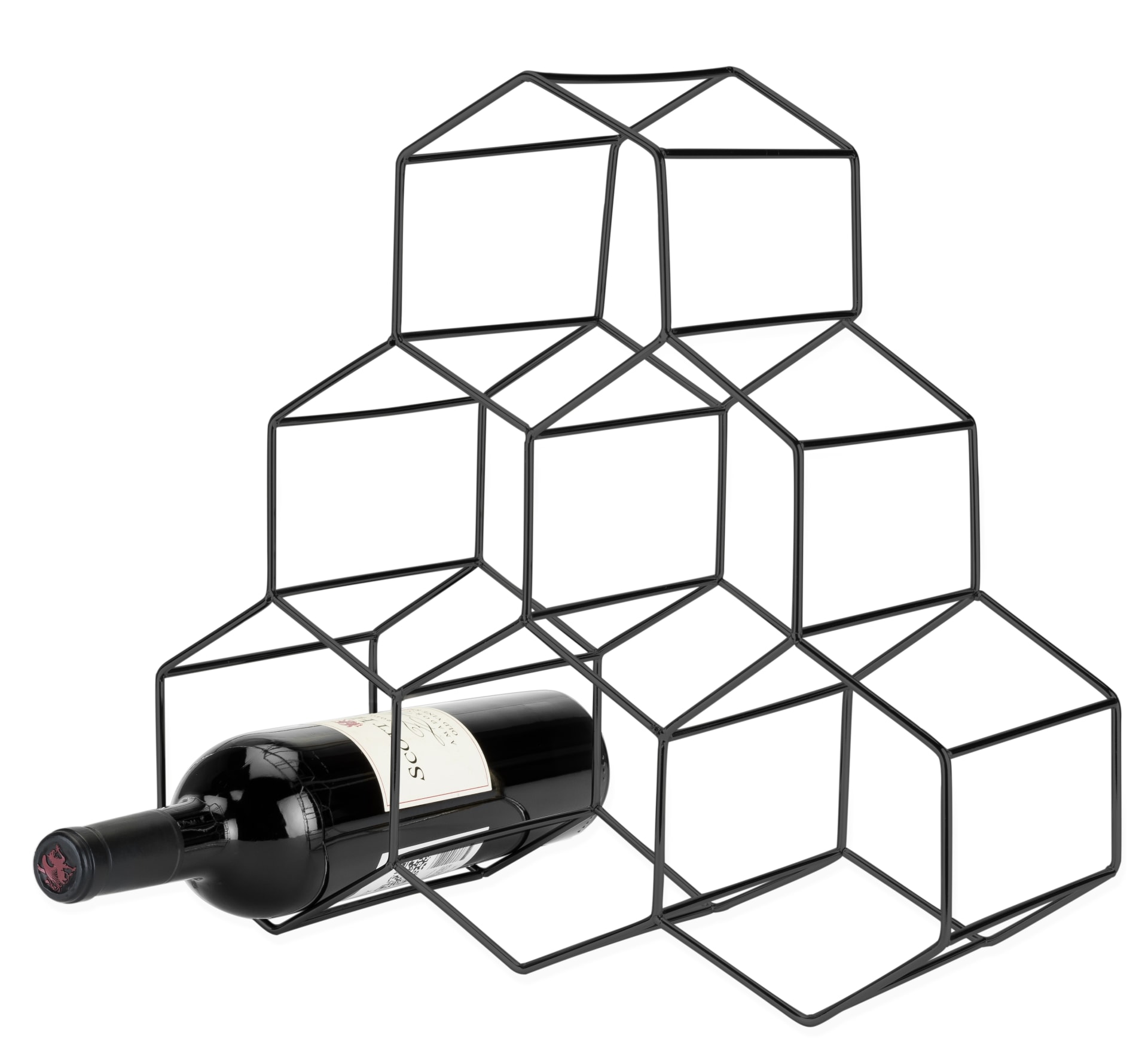
Viski Gunmetal Geo Wine Rack
$44.95
from: HomeWetBar.com
ICE BUCKETS
The perfect serving temperature of wine can differ from the optimal storing temperature. Typically, it is significantly lower, especially for whites and sparkling wines. Thus, you should get the wine from your cellar (or wine cooler) and chill it for about one hour before serving it.
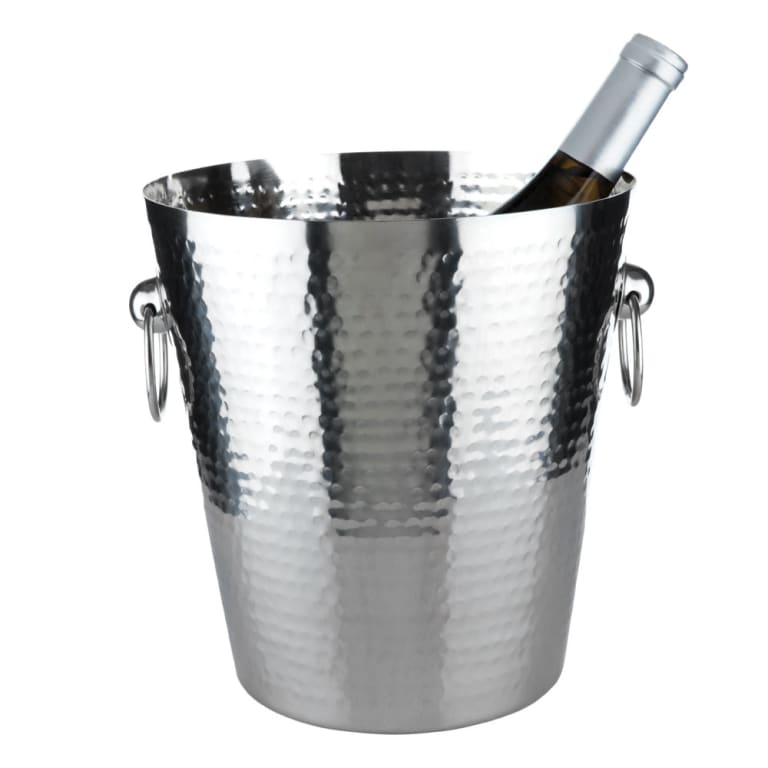
Stainless-Steel Ice Bucket
$49.99
from: Wine.com
In theory, you can use any type of bucket to chill wine. Simply fill it with 50% ice and 50% cold water, and you’re ready to go. But let us be honest: Nobody wants to drink wine from a plastic pail. Also, household buckets are typically too big.
Thus, better buy a special ice bucket (also called: a champagne bucket). They’re made from stainless steel or glass. You can find tabletop models as well as variations with a stand that are perfect for outdoor venues.
Single-bottle ice buckets start from 20 USD. Bigger models cost around 60 USD, and sophisticated crystal buckets can be even more expensive.
WINE GEMS
As soon as wine leaves the bottle, it starts heating up. In summer, it might take only minutes until the wine is too warm to be enjoyable anymore. Especially for whites, rosé, and sparkling wines, that can be a problem.
Some people put ice cubes in their wines to prevent that. But when the ice melts, it dilutes the wine and adulterates its taste.
Wine gems are a better solution. These little cubes are made from stainless steel. You can chill them in your freezer and then put them into your glass. They will keep the wine cool without watering them. Besides, they are easy to clean, dishwasher-proof, and of course, reusable. And by the way, you can use wine gems for other drinks as well. With about 30 Dollars per set of two, they are not too expensive.
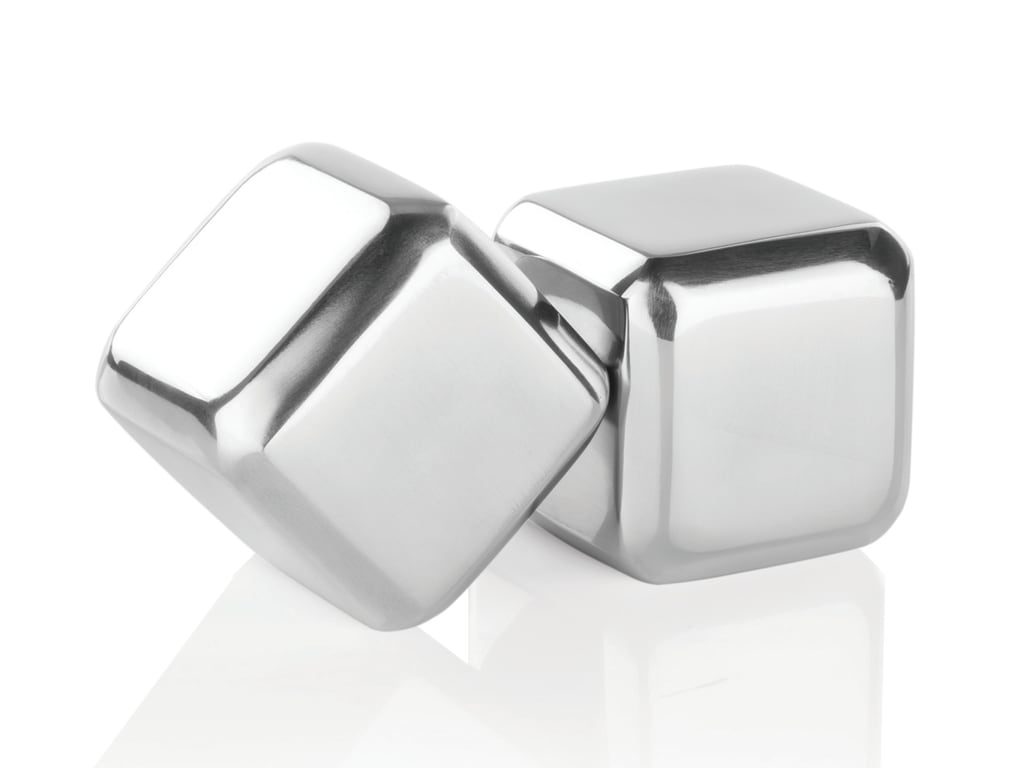
Large Stainless Steel Cubes
$29.99
from: Wine.com
WINE THERMOMETERS
To check whether your wine has the perfect serving temperature or not, you need another crucial tool: a thermometer. In general, every household thermometer is suitable for this purpose. However, a special wine thermometer might be more convenient.
A simple analog wine thermometer works with bottles or glasses. You simply hold it in the wine and wait until it shows the temperature. Instead of an analog thermometer, you can also find digital thermometers that work similarly.

Simple Wine Thermometer
Some variations are designed to replace a bottle stopper. You can put them on top of the bottleneck to monitor the wine’s temperature. If needed, you can also use them to reseal an open bottle for later consumption.
Even more sophisticated are bottle thermometers in bracelet shape. You can clip them around a bottle, no matter if it’s open or closed. In addition to showing the bottle’s actual temperature, this device also provides indicators for the optimal temperature of specific wines.
Standard wine thermometers cost between 5 and 20 USD. Digital devices can be more expensive.
WINE BAGS
Next, let us talk about transportation. If you go to the nearest park to enjoy a picnic with wine, finding the best container for transporting wine becomes a thing.
A purse is too small, a plastic bag carries the risk of tearing, and in a backpack, the bottle might clash with other objects. And if you carry a wine bottle in your hand, you heat it needlessly.
A wine bottle carrier solves all of these problems. With the perfect size for wine bottles and tearproof handles, they allow you to transport your favorite vintages safely. Typically, bottle carriers are made from leather or fabric and hold one or two bottles. They come in the shape of a backpack, a tote sack, or a solid suitcase.
Some models are very sophisticated: They are isolated to keep your wine cool or provide extra space for glasses and corkscrews.
You can also find shockproof suitcases with foam inserts for safe wine transportation on planes.
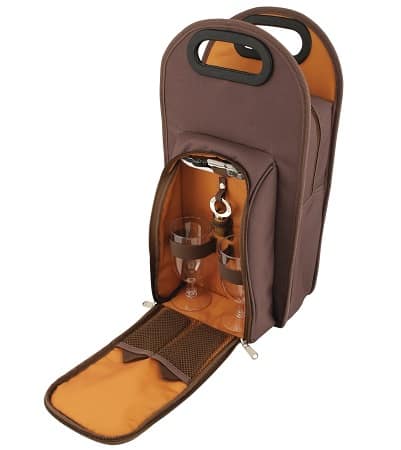
Two Bottle Picnic Tote in Brown
$39.99
from: Wine.com
WINE DISCS
Spilling wine is one of the most annoying things that can happen when hosting a party. Nothing is more frustrating than wasting a good dram – or ruining a tablecloth or a garment with a deep red stain. Unfortunately, the shape of wine bottlenecks doesn’t make it easy to pour wine without an accident.
With a wine pourer, you can minimize the risk of spilling wine to almost zero. The most basic pourers are discs made from metal foil. You can simply roll these foils to form an extension for the bottleneck, making pouring the wine much safer. As the discs are flexible, you can use them for any type of bottle, no matter the diameter of the opening. After using them, you can clean them and use them again later.
WINE AERATORS
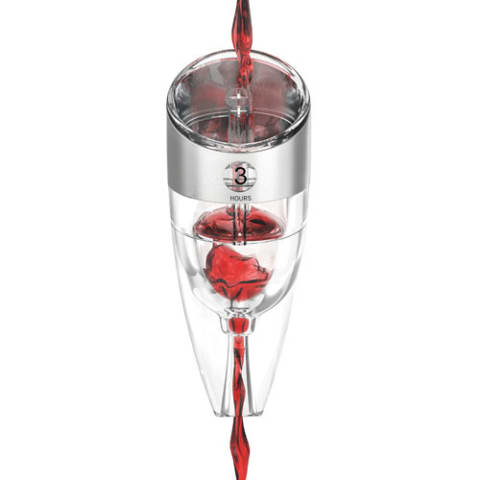
Adjustable Wine Aerator
$39.99
from: Wine.com
Instead of wine discs, you can also use a wine aerator. In contrast to the discs, an aerator isn’t flexible. However, because of its tapered silicon base, it fits all conventional wine bottles anyways. The top part assures that you can pour the wine steadily and safely into your glass.
As the name suggests, wine aerators have an additional function: They bring your wine in contact with oxygen while pouring. The oxygen helps the wine release all of its aromas so that it can show its full potential.
Be aware that the level of aeration is relatively low. That makes aerators proper wine tools for crisp and fresh wines that need only a bit of oxygen. Most whites, rosés and some light reds belong to this category. Bolder wines need more aeration to open up; an aerator is not the right tool for them.
Aerators come in different shapes. The most popular design looks similar to a rolled-up wine disc, but it is made from solid transparent plastic. Other types feature more extended spout tips.
Expect to pay between 5 and 10 USD for this device. You can also find electric aerators that pour wine on click. These wine tools start at about 30 USD.
WINE DECANTERS
The formerly mentioned aerators are great for light wines that need just a bit of oxygen. Bolder, more complex wines need more oxygen and more time to breathe. To give them the proper aeration, you need a decanter.
Essentially, a decanter is an interim storage. You pour your wine from the bottle into it and let it breathe there for some time. Then you pour it into the glasses. Depending on the wine, 15 minutes to 3 hours of decanting are sufficient. In rare cases, single wines might need up to 24 hours.
Decanters are made from glass or crystal. The standard model has a wide base and a long neck. This shape allows a decent amount of air to get into touch with the wine. For full-bodied wines, this is just fine. Alternative designs like the duck decanter or the swan decanter restrict the airflow to provide better conditions for medium-bodied or light wines.
Decanters are among the most important wine tools. As a wine lover, you definitely should own at least one. The standard design is fine for most wines. Only if you have a strong preference for a specific type of wine, should you consider buying a differently shaped decanter that serves this type better. Depending on the quality, wine decanters cost between 20 and 600 USD.
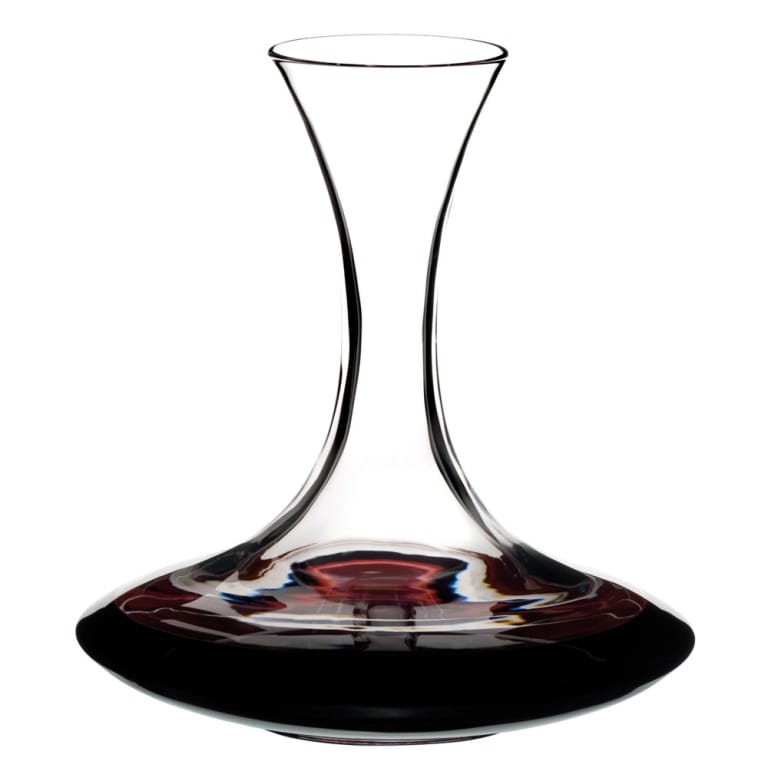
Riedel Ultra Decanter (Standard)
$199.97
from: Wine.com
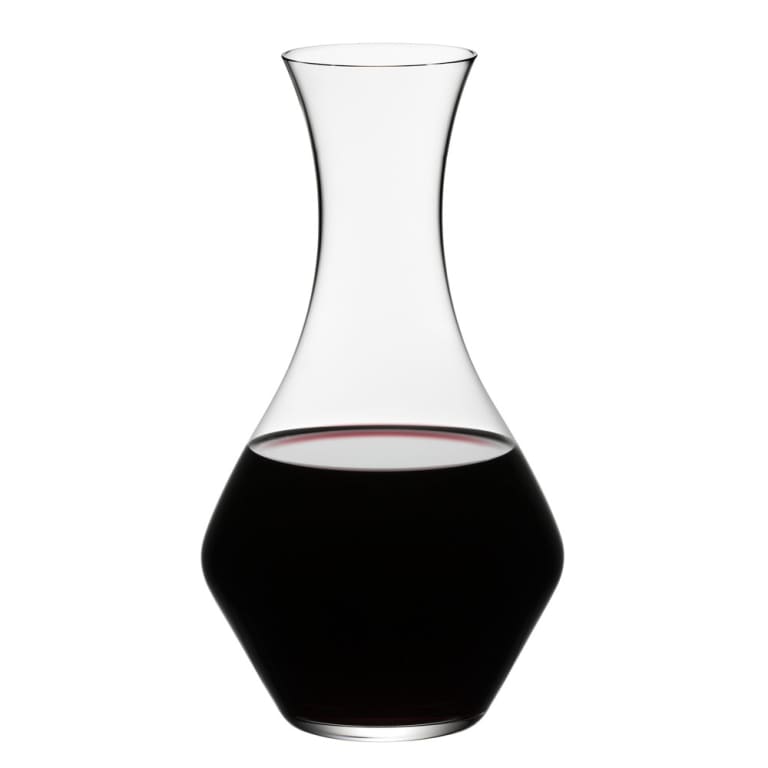
Riedel Cabernet Decanter (Cornetto)
$69.97
from: Wine.com
WINE BOTTLE STOPPERS
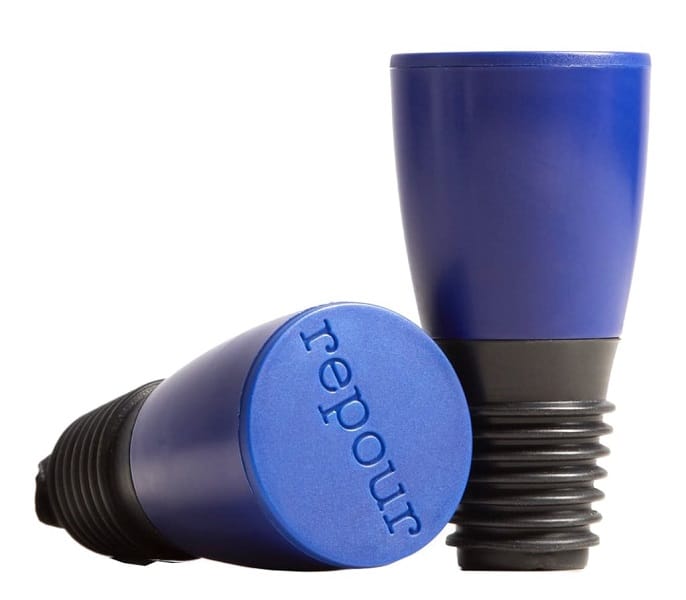
Repour Wine Saver, 10 Pack
$19.99
from: Wine.com
If you open a bottle of wine but do not want to finish it the same day, you need the right equipment to save it from spoiling. You cannot leave the bottle open, because the continuous contact with air would cause it to go off. But often, it is not possible to slide the original cork back in. And especially if it is damaged, that is not a good idea anyway.
A wine stopper is a good replacement for the original cork. It creates an airproof seal that keeps your wine fresh so you can enjoy it the next day.
Simple stoppers are made from rubber or silicone, so they are flexible and work with all types of bottles. They are easy to insert and remove, reusable, and often dishwasher-proof. With 1 to 2 USD per stopper, they are also affordable.
Another common type is made from stainless steel and has a lever. It creates a tighter seal that prevents leaks even when the bottle lies on its side. These metal stoppers usually cost between 10 and 20 USD.
WINE PUMPS
To prolong the life expectancy of an open bottle of wine, you can use a wine pump. By pumping the air out of the bottle, you can create a vacuum inside. And without air in the bottle, the wine will not oxidize and will keep for up to one week.
A wine pump only works in combination with the matching stopper. You have to put the stopper in the bottle and place the pump on top of the stopper. The stopper will allow the air to leave the bottle when you start pumping, but it prevents it from getting back in.
A wine pump typically comes in a package with one to four stoppers. Expect to pay between 15 and 30 USD. Electric pumps are in the same price range, but they work without an additional stopper. You simply put them on the bottle, set them on, and leave them there until you want to finish the wine.
WINE PRESERVATION SPRAY
A preservation stray has the same purpose as a wine pump: It forces oxygen out of the bottle. But instead of creating a vacuum, it replaces the oxygen with a mixture of carbon dioxide, nitrogen, and argon. The result is the same: The wine cannot oxidize and keeps longer.
As a pump, a preservation spray only works correctly if you seal the bottle immediately after using it. So you need a rubber or silicone bottle stopper.
One can of preservation spray holds enough gas for about 120 uses and costs 8 to 10 USD.
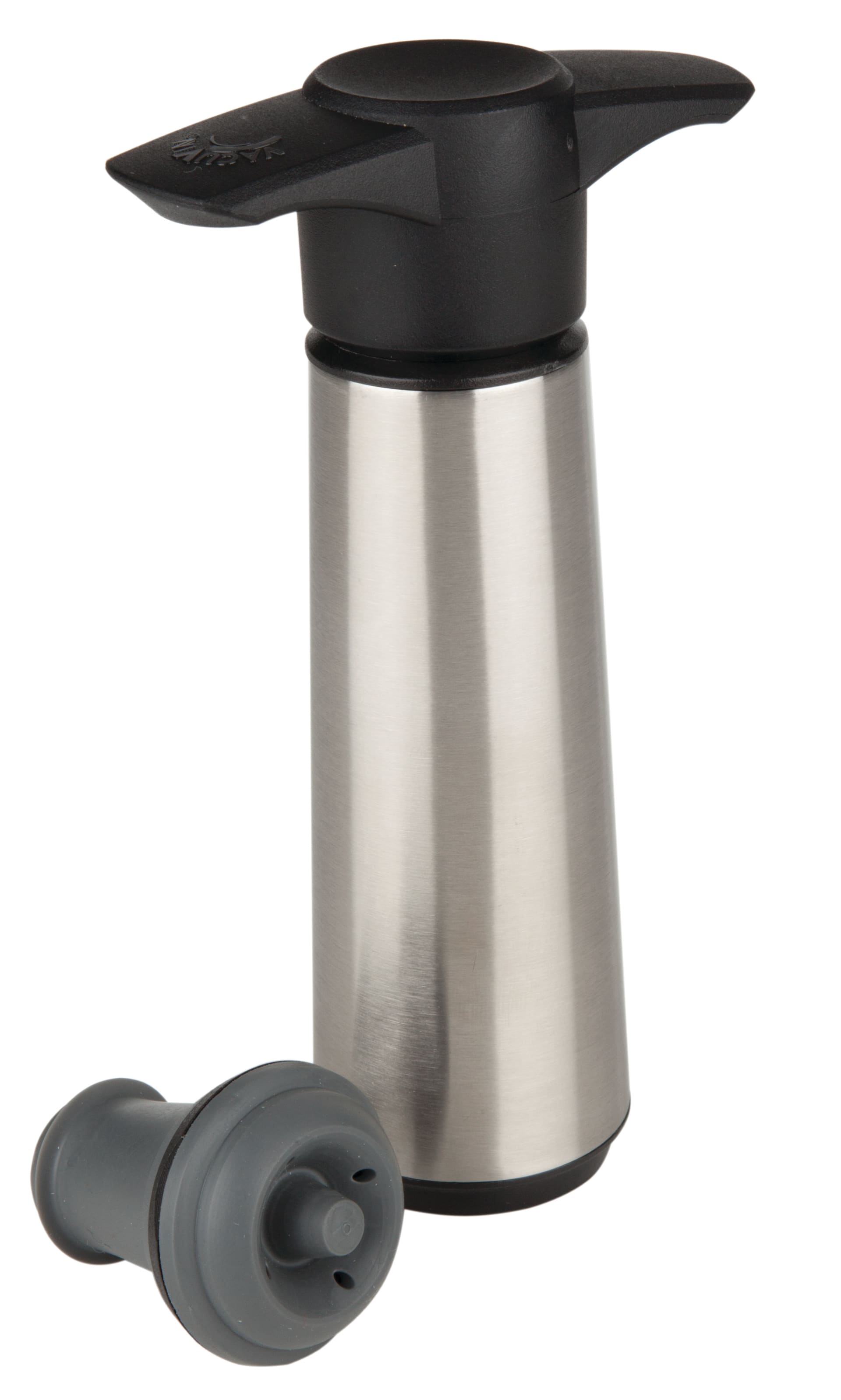
Vac Vin Stainless Steel Wine Saver
$24.99
from: HomeWetBar.com
CORAVIN PRESERVATION SYSTEM
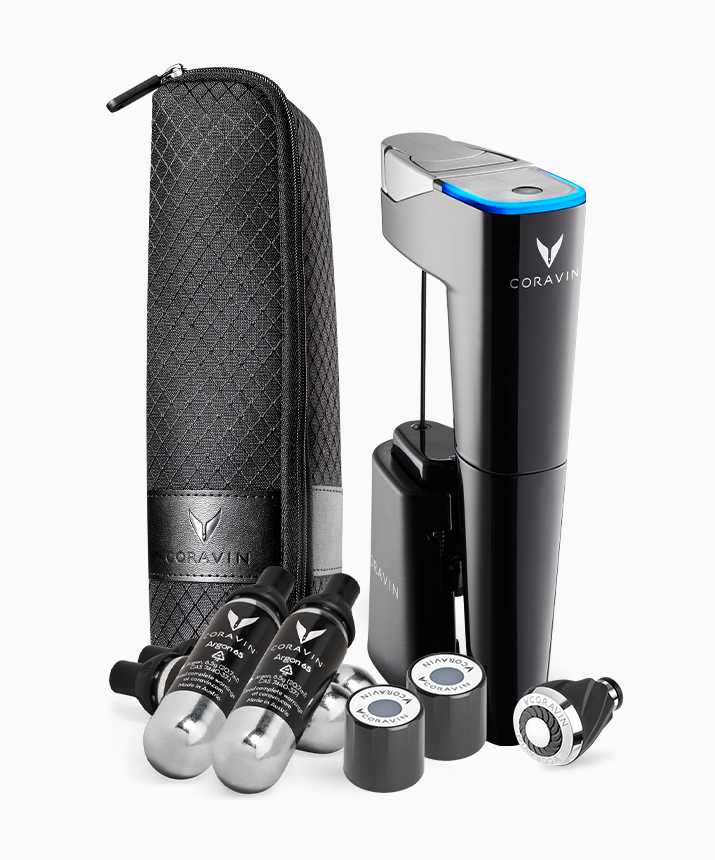
Coravin Timeless Eleven
$499.00
from: Coravin.com
The Coravin Preservation System is a high-tech tool for wine lovers. At first glance, it might remind you of a water carbonation system. But its actual purpose is much more sophisticated: It allows you to pour wine from a bottle without removing or destroying the cork.
You apply the device to the bottleneck, just like a wine pump. A small needle goes through the cork and lets you pump wine out of the bottle. Afterward, it injects gas into the bottle to create a new, airtight seal that prevents the wine from spoiling. So you can enjoy a glass or two and then put the bottle back into your cellar.
You can say that the Coravin Preservation System replaces a corkscrew and a wine pump or preservation spray simultaneously. Some models also contain an aeration system that exposes only the wine you pour from the bottle to oxygen. And the latest version even has a Bluetooth interface that allows you to check the system status via the Coravin app.
With 100 to 800 USD, the Coravin Preservation System is a costly tool. And as one gas capsule only provides enough gas for about 15 glasses of wine, you will have to restock them at some point. Also, the tool only works with natural corks; it cannot handle synthetic corks or screw caps.
Despite these disadvantages, it is a handy device. Especially if you are a red wine lover and regularly open a bottle that you do not finish the same day, a Coravin device is a great investment.
BOTTLES FOR LEFTOVERS
In case, you are searching for an easier way to store leftover wine, consider buying some small glass bottles. Instead of trying to reseal an open wine bottle, just transfer the wine to these smaller containers. They leave less space for air inside, so the wine stays fresh longer.
With the proper stopper (or screw cap), these small bottles allow you to store leftover wine safely. And you can also give them to your guests to take them home and enjoy the wine the next day.
Be aware that these bottles are not designed for long-term storage. They are useful for safe transportation or keeping wine in the fridge for one or two days. Beyond that, they cannot prevent your wine from spoiling.
Typically, a set of 12 glass bottles of 5oz (150ml) costs around 15 USD. Bigger containers with a volume of 12oz (375ml) are available from 20 USD per set of 12.
WINE CHARMS
The more guests you host and the more different wines you serve, the more glasses will be around your house. And the longer your party goes on, the more people will lose or confuse their glasses.
With wine charms, you can avoid this problem. Charms are little tags that you can attach to the stem of a wine glass. They have different forms or colors, and you can find all kinds of themes to match your party’s theme. No matter which styles you choose, the wine charms will help your guests distinguish their glasses from each other and find a lost glass again anytime.
Another cool thing about wine charms is that they make fantastic souvenirs. So if you celebrate a wedding or another memorable event, you can give the charms to your guests as a gift.
Typically, wine charms come in sets of 6 to 50 pieces. Depending on the material and the quality, they range from 10 to 30 USD.
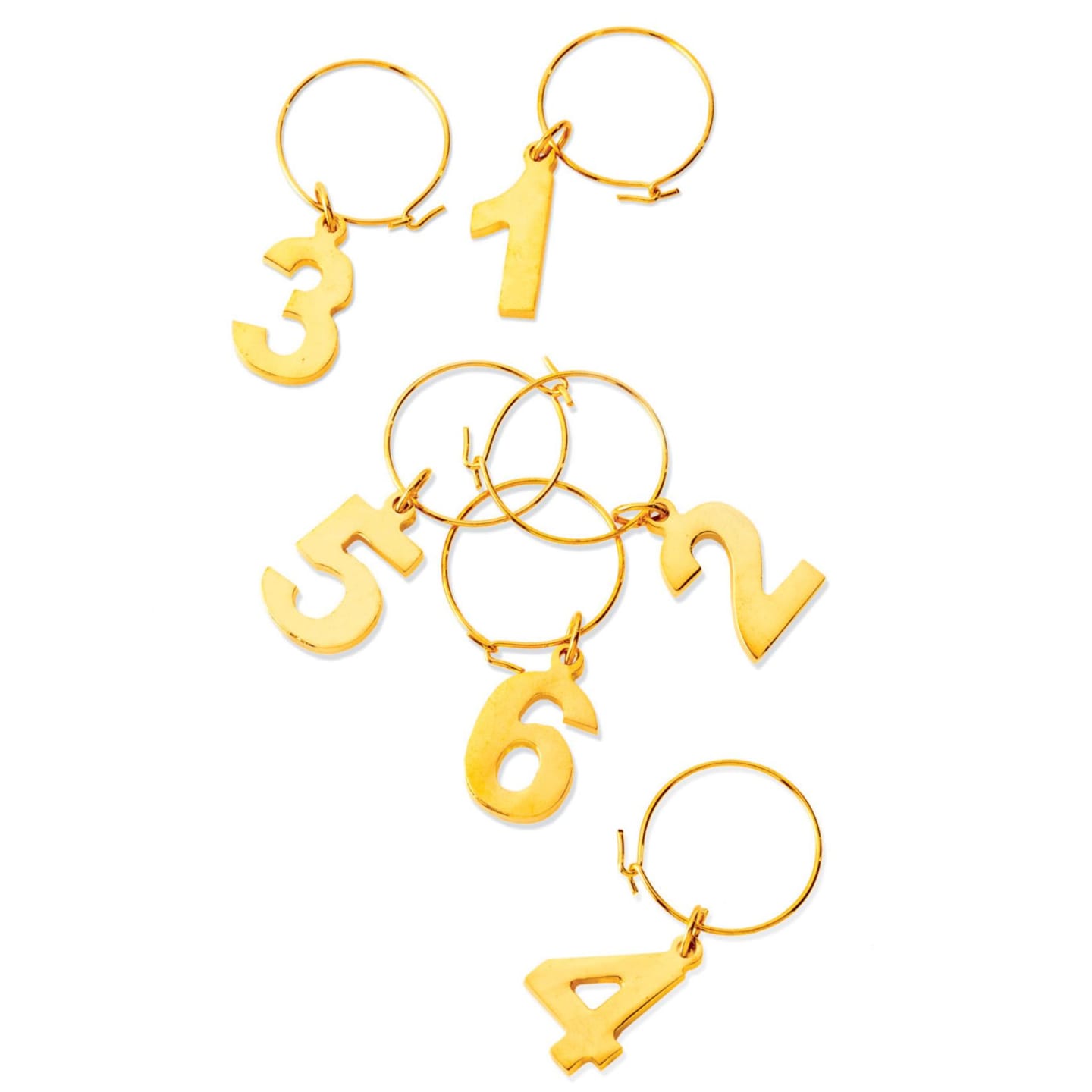
Viski Gold Plated Number Wine Charms
$19.99
from: Wine.com
WINE JOURNALS
As a real wine lover, you not only want to experience great wine. You also want to sharpen your senses. And, of course, you want to remember the best wines you tasted to find them again another day. A wine journal can help you with both of these tasks.
A wine journal is a logbook to describe what you see, smell, and taste when drinking wine. It is a great memory aid for remembering the varietals, origins, and names of your favorite wines. While a blank booklet serves the purpose, you can find journals explicitly made for wine tastings. They contain multiple-choice forms that allow you to note and judge your experiences quickly and clearly. Some also offer blank spaces to glue the bottle labels in.
When attending a wine tasting, a wine journal is a must-have. And it is also a great gift if you host a tasting for your friends. Paperback journals are available for around 10 USD. Hardcover or leather-bound books might be more expensive and costs up to 40 USD.
FINAL WORDS
>Wine is not only a delicious hobby, but it is also a complex one. To enjoy it to the fullest, you should build your own toolbox. With the proper glassware, appliances, and accessories, you will take your wine experience to a new level.
Do not feel pressured to spend thousands of dollars immediately, though. Start small, explore which items help you best, and then slowly build your kit of wine tools.

